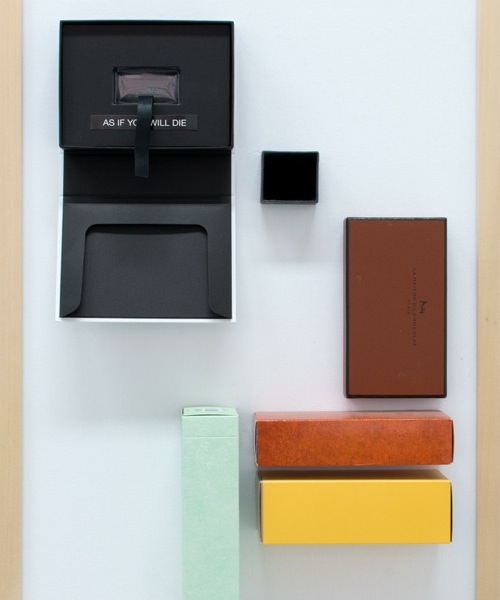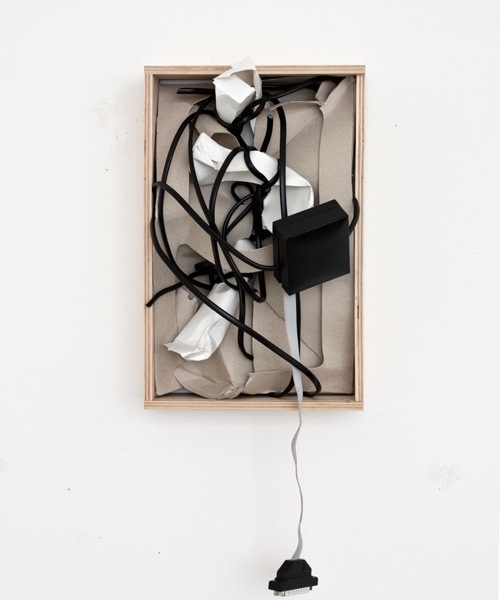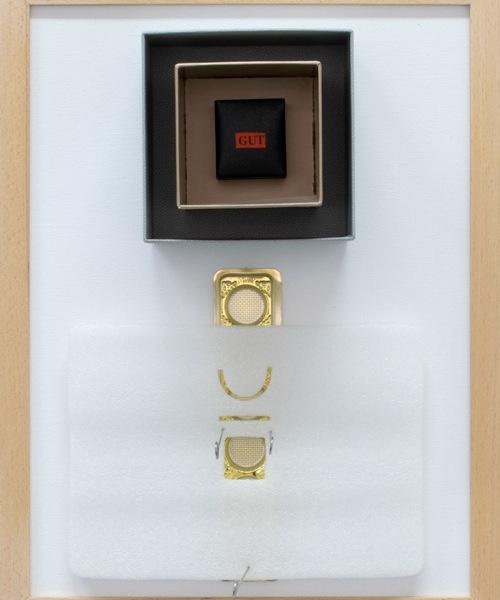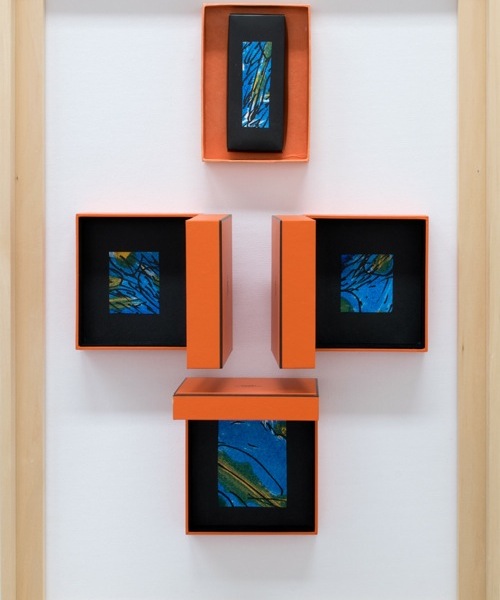boxes
With modernism, the interest of many artists was directed at the shiny new world of consumption and advertising. In 1919, Kurt Schwitters presented his very first MERZ picture. The Dadaist, poet, and graphic designer took the syllable from the term Kommerz, or commerce. In Schwitters’ tradition, a whole genre of art emerged that could be called “consumption art.”
In the 1960s, following the spirit of the time, primarily based in social critique, and today it is rather neutral of affirmative, numerous artists have used products as building blocks for their works: the Swiss artist Sylvie Fleury, specialized in the staging of glamour, fashion, and luxury articles, is around the world today perhaps the most prominent representative of this shopping brigade.
Rolf Sellmann shares with Fleury an interest in luxury goods. But his “boxes,” unlike her ready-mades, could never pass as showcase commodities because Sellmann radically de-familiarizes the cardboard boxes of perfumes or other lifestyle accessories. Containers piled up on shelves become constructivist structures that follow an artistic logic all their own.
Schwitters, to return to the patron saint of this kind of art, coined the lovely term entformeln (de-formulaing) (Formen heißt entformeln, to form means to de-formula, according to one of his sayings). Indeed the packaging loses all its formulaicness by way of Sellman’s rearrangement.
Each box, originally a container for a perfume sold millions of times over, becomes a unique object. If the boxes appeal first and foremost to our sense for balanced composition, this does not mean that the world of consumption from which they come has no relevance at all. Instead, in this series it is what keeps the balance: “If details, like advertising slogans, can be integrated in an ironic or at least disturbing way, that pleases my playful artist’s heart,” Rolf Sellmann stresses.



